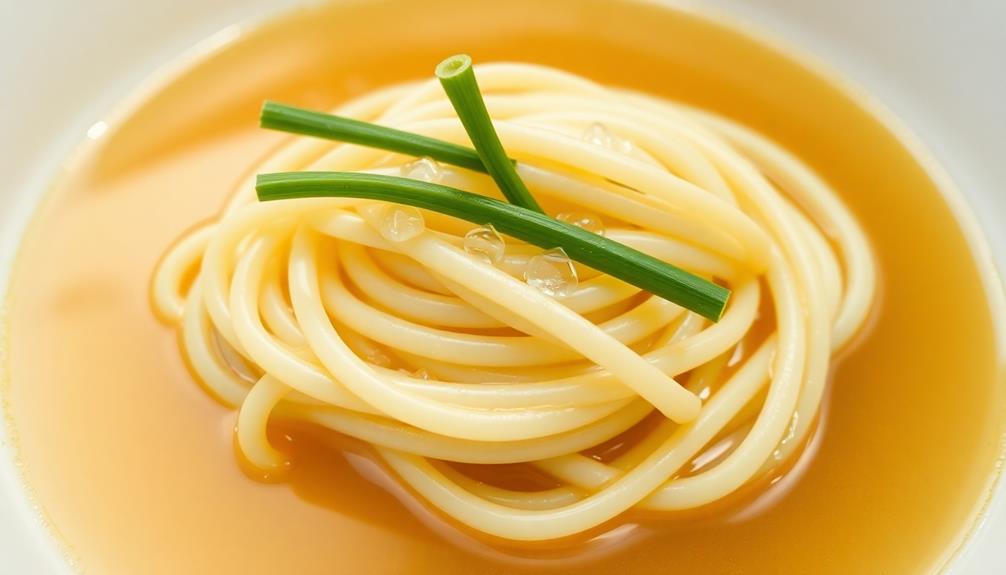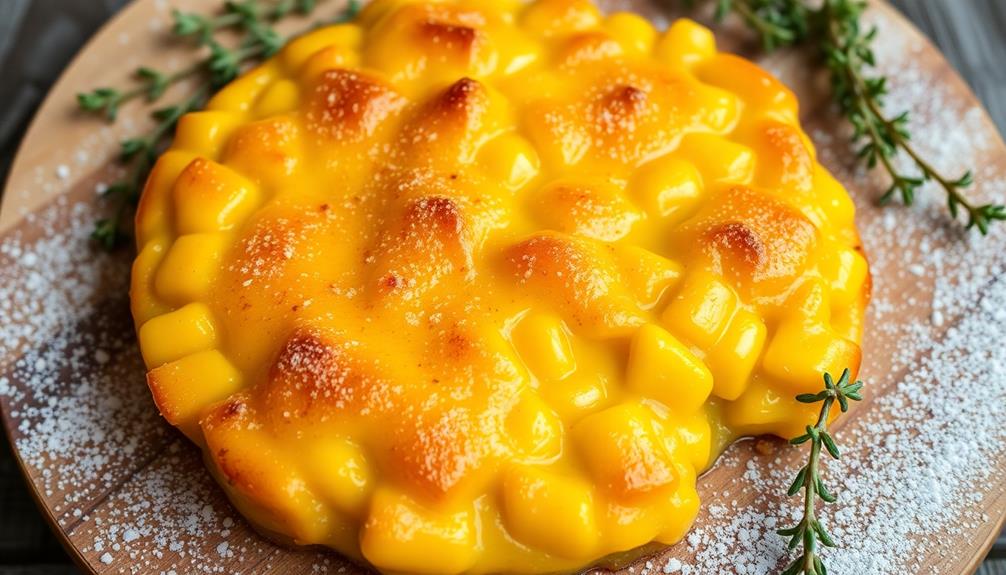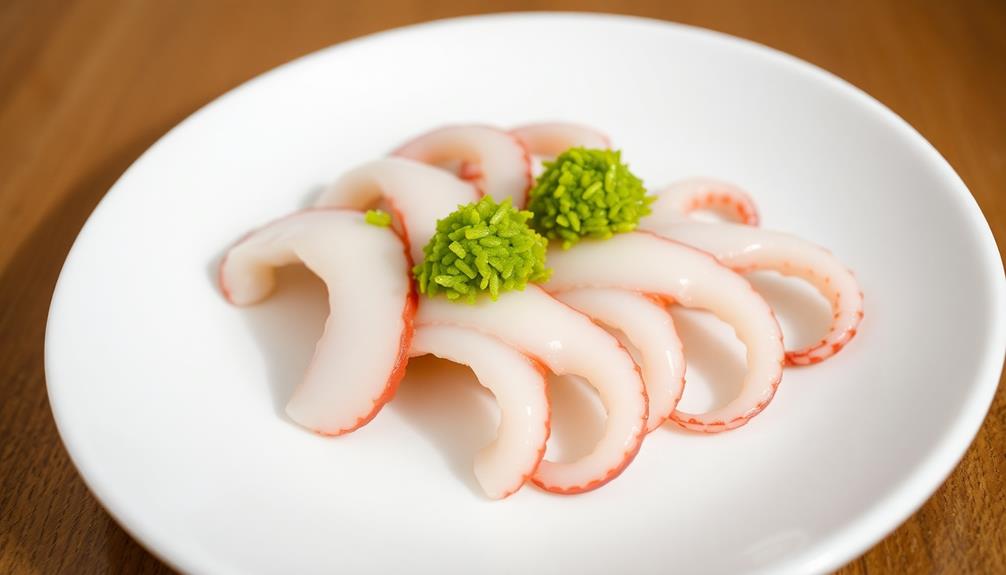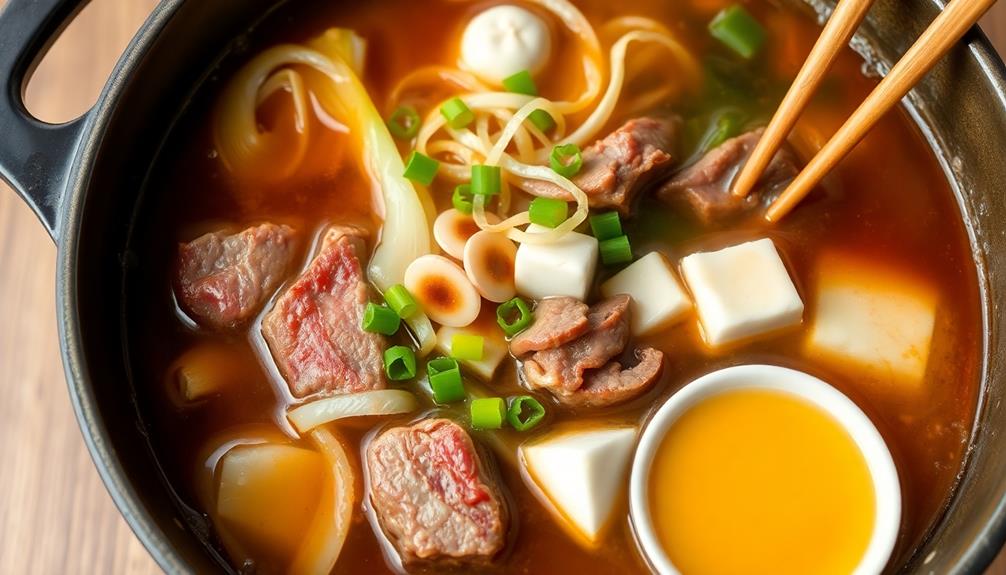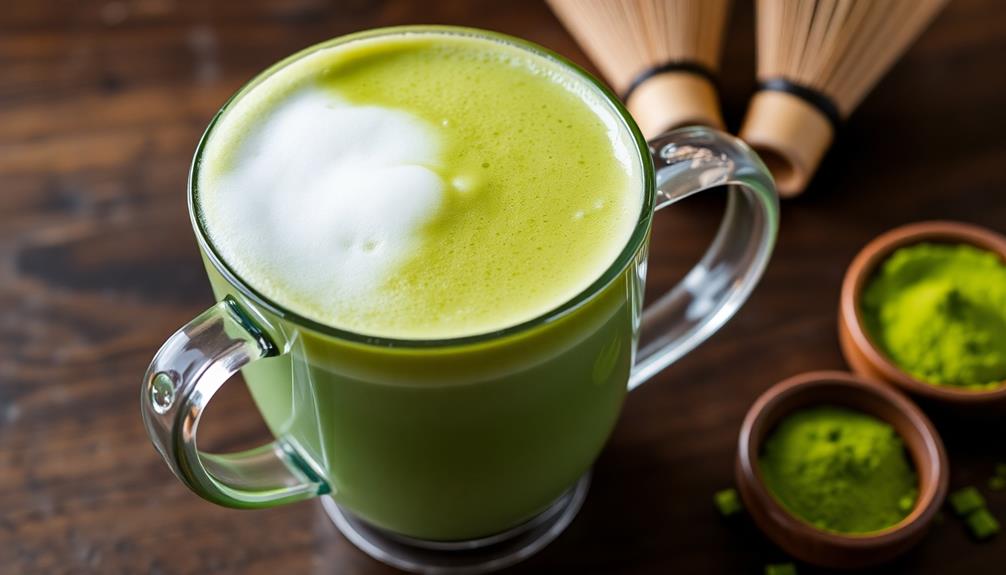You may think you know udon, but have you truly explored the depth and complexity of this beloved Japanese noodle dish? Originating centuries ago, udon has evolved into a culinary treasure that captivates the senses. The pillowy texture, the savory broth, the myriad of toppings – it's a symphony of flavors waiting to be discovered. Whether you're a seasoned udon enthusiast or a newcomer to this culinary delight, there's always more to uncover. So, get ready to embark on a journey that will tantalize your taste buds and reveal the true essence of this Japanese comfort food. If you think you’ve experienced all that Japanese noodles have to offer, think again. Udon’s cousin, the delicious Nagasaki noodle dish, offers a unique and distinct flavor profile that is sure to delight your palate. So, why not expand your culinary horizons and dive into the world of Japanese noodles? With each bowl, you’ll discover a new dimension of taste and a deeper appreciation for the art of noodle-making.
Key Takeaways
- Udon is a type of thick, chewy wheat noodle originating from China and becoming a staple in Japanese cuisine since the 9th century.
- Udon is often served in a dashi-based broth or stir-fried, with popular variations like kitsune udon and tempura udon.
- Udon preparation involves boiling the noodles until chewy but tender, and the broth is typically made with dashi, soy sauce, and mirin.
- Udon is associated with comfort food in Japan and is often enjoyed during festivals and family gatherings, representing the concept of "umami."
- Whole wheat udon offers higher fiber content and is low in fat, making it a healthier carbohydrate choice that has gained global popularity.
History
The origins of udon can be traced back to the 9th century, when it was first introduced to Japan from China. This thick, chewy noodle quickly became a beloved staple in Japanese cuisine, with regional variations developing over the centuries.
In the 13th century, udon gained popularity in the Kagawa prefecture, located on the island of Shikoku. Local chefs perfected the art of making these noodles by hand, using high-quality wheat flour and pure spring water. The resulting texture and flavor became renowned throughout Japan, earning Kagawa the title of "Udon Country."
Today, udon remains a cherished part of Japanese culinary heritage. Whether enjoyed in a warm broth, chilled with dipping sauce, or as a base for hearty dishes, this versatile noodle continues to delight diners with its comforting and satisfying qualities.
The history of udon is a testament to the enduring appeal of traditional Japanese cuisine.
Recipe
Udon is a popular Japanese noodle dish that features thick, chewy wheat flour noodles in a savory broth. The dish is known for its satisfying texture and comforting flavor. Preparing udon at home can be a rewarding experience, allowing you to customize the dish to your taste.
To begin, it's important to source high-quality udon noodles, which can be found in Asian grocery stores or specialty markets. The noodles come in various shapes and sizes, so feel free to experiment with different varieties to find your preference.
- Udon noodles
- Dashi stock (or vegetable/chicken broth)
- Soy sauce
- Mirin (Japanese rice wine)
- Green onions, sliced
- Tempura or other desired toppings (optional)
To cook the udon, bring the dashi stock or broth to a simmer in a large pot. Add the soy sauce and mirin, adjusting the seasoning to your liking. Gently add the udon noodles and cook for 2-3 minutes, or until they're tender and heated through. Be careful not to overcook the noodles, as they should maintain a firm, chewy texture.
When serving, arrange the cooked udon noodles in bowls and ladle the hot broth over the top. Garnish with sliced green onions and, if desired, tempura or other toppings of your choice.
The key to a satisfying udon dish is achieving the perfect balance of flavors and textures, so feel free to experiment and adjust the recipe to your personal taste.
Cooking Steps
First, bring a large pot of water to a boil and add a pinch of salt.
Then, carefully drop the udon noodles into the pot and let them cook for a few minutes.
Step 1. Boil Water in Large Pot

Once the large pot is ready, you'll want to fill it with a generous amount of water.
Bring the water to a rapid boil over high heat. This will ensure the udon noodles cook evenly and thoroughly. Keep a close eye on the pot, as the water can quickly come to a boil.
Once the water is at a full, rolling boil, it's time to add the udon noodles.
Carefully drop the noodles into the hot water, being cautious of any splashing. Stir the noodles gently with a wooden spoon or chopsticks to separate them and prevent them from sticking together.
Maintain the boil and cook the noodles for the recommended time, typically 8-10 minutes.
Taste the noodles occasionally to ensure they reach the desired texture – tender yet still retaining a pleasant chew.
When they're done, drain the noodles in a colander, reserving some of the cooking liquid if needed for the final dish.
Step 2. Add Salt to Water

Adding a pinch of salt to the boiling water is a simple yet essential step in cooking udon noodles. This small addition enhances the overall flavor of the noodles, bringing out their natural sweetness and creating a more balanced taste.
As the water comes to a boil, sprinkle in a small amount of salt, about 1/2 teaspoon per quart of water. Stir the water gently to ensure the salt dissolves completely. The salted water will help to season the noodles from the inside out, infusing them with a delightful savor.
When the water is at a rolling boil, gently add the udon noodles. The salt in the water will help the noodles cook more evenly, preventing them from sticking together.
Stir the noodles occasionally to maintain an even cooking temperature and texture.
Step 3. Add Udon Noodles to Pot
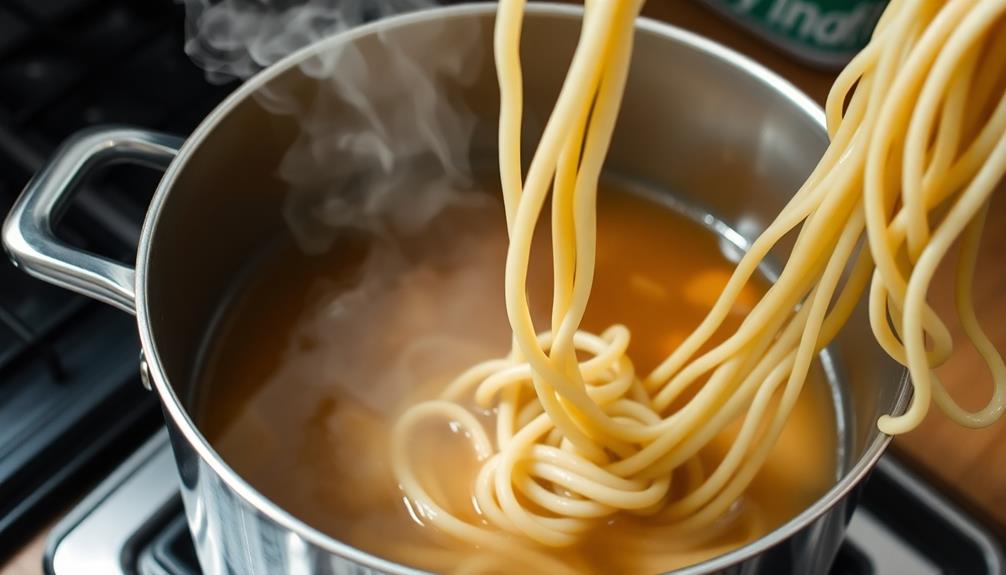
With the salted water at a rolling boil, gently lower the udon noodles into the pot. The noodles will initially stick together, but don't worry – they'll separate as they cook.
Stir the noodles occasionally to prevent sticking and ensure even cooking.
After a few minutes, the udon noodles will become tender and chewy. This is the perfect time to taste them and adjust the seasoning if needed. You can add more salt or a splash of soy sauce to enhance the flavor.
Once the noodles are cooked to your liking, use tongs or a slotted spoon to transfer them from the pot to your serving bowls. Be careful not to overcrowd the bowls, as you want the noodles to have room to breathe.
Drizzle a bit of the cooking liquid over the noodles to keep them moist and flavorful.
Enjoy your freshly cooked udon noodles as the base for a delicious soup or stir-fry dish. The possibilities are endless!
Step 4. Drain Noodles and Rinse With Cold Water
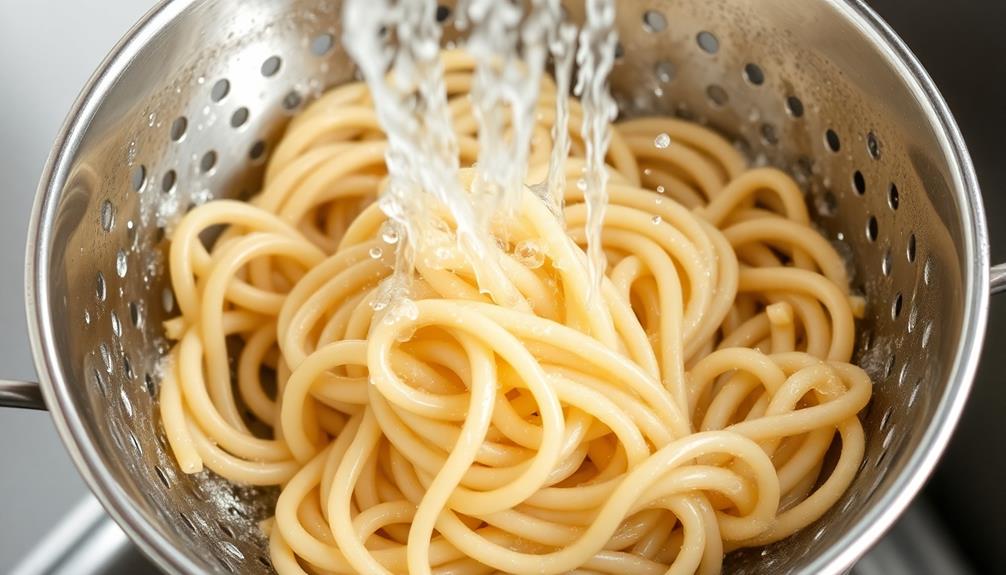
After the udon noodles have finished cooking, you'll want to drain them from the pot. Carefully pour the noodles into a colander, letting the hot water drain away.
Once they're drained, it's time to rinse the noodles with cold water. This step is crucial, as it stops the cooking process and helps remove any excess starch.
Grab a large bowl and fill it with cold water. Gently transfer the drained noodles into the cold water and use your hands to swish them around. This will help remove any remaining starch and ensure your noodles have a nice, firm texture.
After a minute or so, drain the noodles again, being careful not to let them stick together.
With your udon noodles now drained and rinsed, you're ready to move on to the next step in the recipe. The cold water rinse has prepared them perfectly for their final preparations and serving.
Step 5. Serve With Desired Toppings
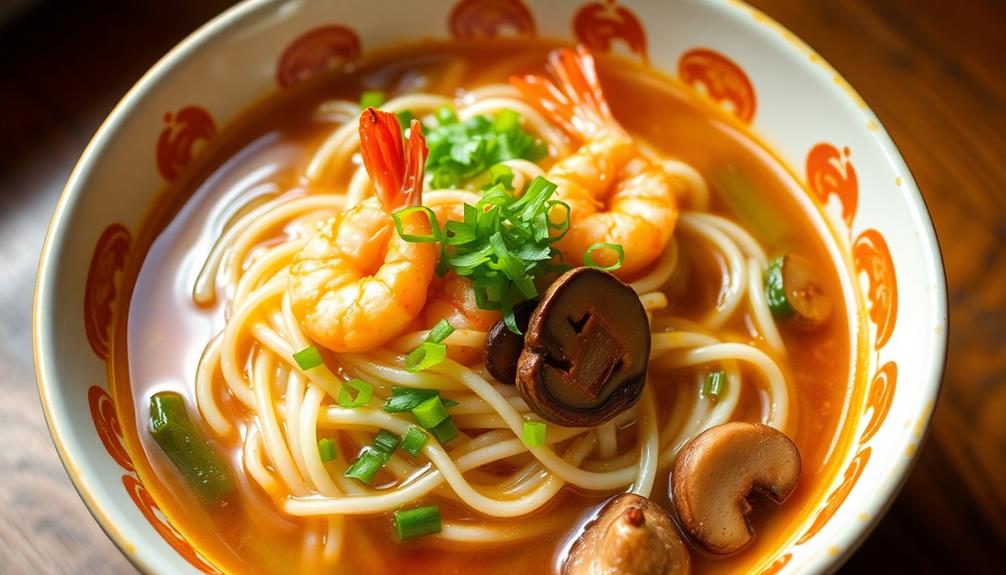
The final step is to serve your freshly cooked udon noodles with your desired toppings. This is where you can truly make the dish your own! Start by dividing the noodles into individual serving bowls. Don't be shy – pile them high for a hearty, satisfying meal.
Next, select your favorite toppings. Common choices include sliced green onions, tempura bits, shredded nori, soft-boiled eggs, or even a sprinkle of crushed chili peppers for a spicy kick. If you're feeling adventurous, try adding a dollop of tangy Japanese mustard or a drizzle of savory soy sauce.
Once you've assembled your toppings, it's time to serve. Ladle in a bit of the hot broth or dipping sauce, then artfully arrange your chosen garnishes on top.
The contrast of the steaming noodles, cool toppings, and flavorful sauce creates a symphony of textures and tastes. Grab your chopsticks and enjoy this authentic Japanese comfort food experience!
Final Thoughts
Udon, a Japanese culinary marvel, captivates the senses with its unique texture and depth of flavor. As you've explored the preparation and serving of this delightful noodle dish, you're now ready to savor the final thoughts.
Udon's versatility is truly remarkable. Its thick, chewy strands can be enjoyed in a variety of preparations, from the classic hot broth to the refreshing zest of cold noodles.
Whether you prefer a simple seasoning or an elaborate array of toppings, the possibilities are endless.
Embracing the art of udon-making can be a rewarding and meditative experience. From the rhythmic kneading of the dough to the precise cutting and shaping, each step offers a chance to connect with the rich culinary traditions of Japan.
As you twirl the noodles and savor each bite, you'll be transported to a world of harmonious flavors and textures.
